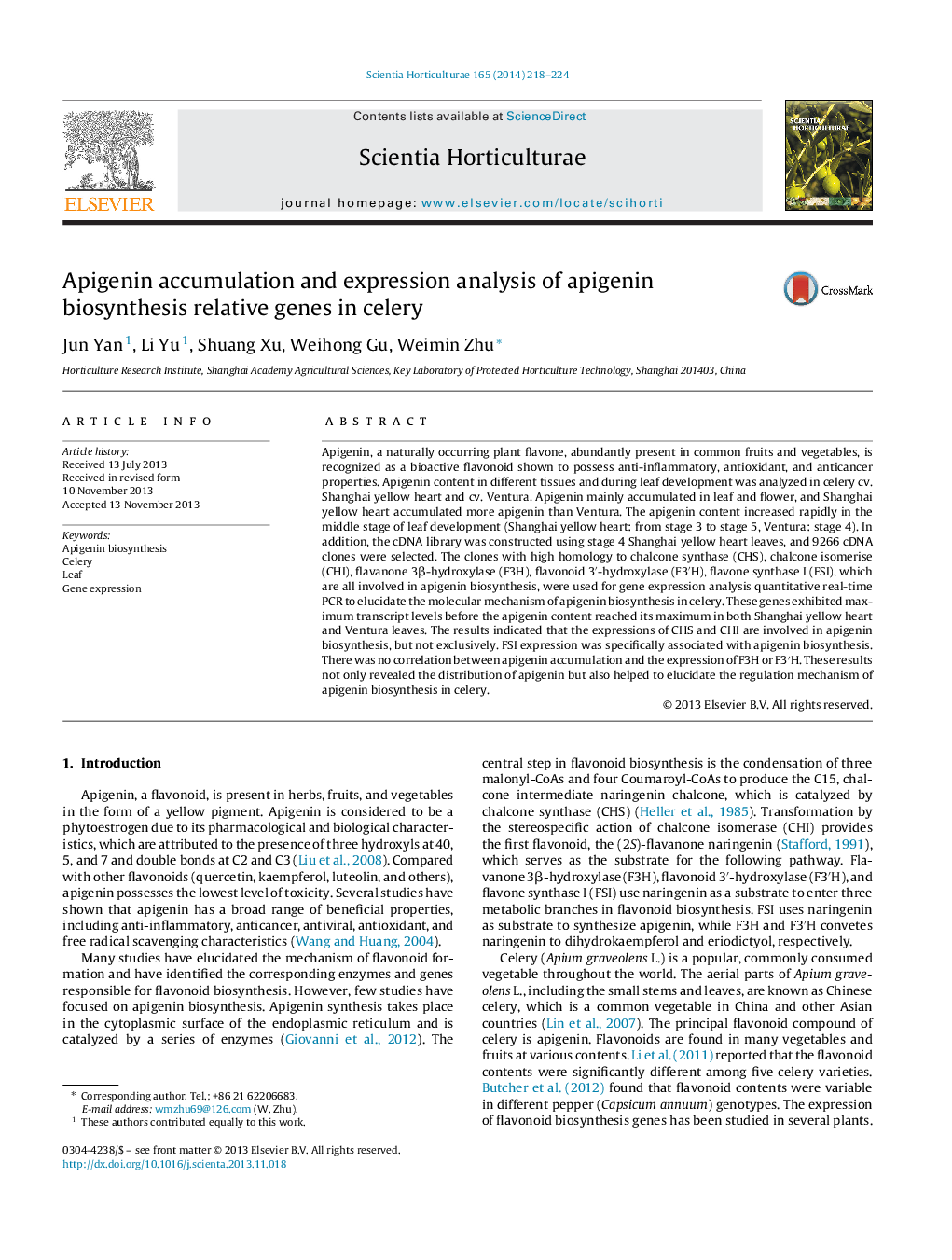| Article ID | Journal | Published Year | Pages | File Type |
|---|---|---|---|---|
| 6407432 | Scientia Horticulturae | 2014 | 7 Pages |
Abstract
Apigenin, a naturally occurring plant flavone, abundantly present in common fruits and vegetables, is recognized as a bioactive flavonoid shown to possess anti-inflammatory, antioxidant, and anticancer properties. Apigenin content in different tissues and during leaf development was analyzed in celery cv. Shanghai yellow heart and cv. Ventura. Apigenin mainly accumulated in leaf and flower, and Shanghai yellow heart accumulated more apigenin than Ventura. The apigenin content increased rapidly in the middle stage of leaf development (Shanghai yellow heart: from stage 3 to stage 5, Ventura: stage 4). In addition, the cDNA library was constructed using stage 4 Shanghai yellow heart leaves, and 9266 cDNA clones were selected. The clones with high homology to chalcone synthase (CHS), chalcone isomerise (CHI), flavanone 3β-hydroxylase (F3H), flavonoid 3â²-hydroxylase (F3â²H), flavone synthase I (FSI), which are all involved in apigenin biosynthesis, were used for gene expression analysis quantitative real-time PCR to elucidate the molecular mechanism of apigenin biosynthesis in celery. These genes exhibited maximum transcript levels before the apigenin content reached its maximum in both Shanghai yellow heart and Ventura leaves. The results indicated that the expressions of CHS and CHI are involved in apigenin biosynthesis, but not exclusively. FSI expression was specifically associated with apigenin biosynthesis. There was no correlation between apigenin accumulation and the expression of F3H or F3â²H. These results not only revealed the distribution of apigenin but also helped to elucidate the regulation mechanism of apigenin biosynthesis in celery.
Keywords
Related Topics
Life Sciences
Agricultural and Biological Sciences
Horticulture
Authors
Jun Yan, Li Yu, Shuang Xu, Weihong Gu, Weimin Zhu,
